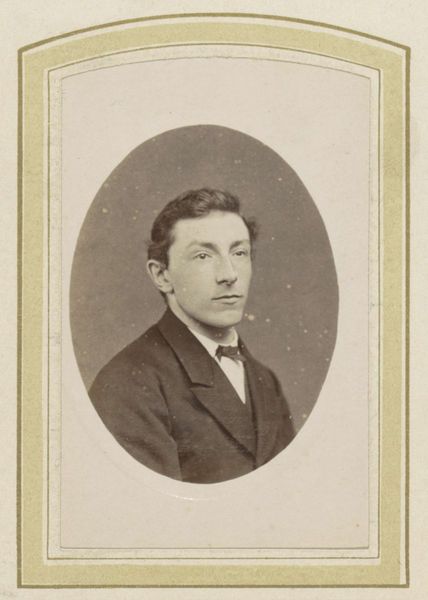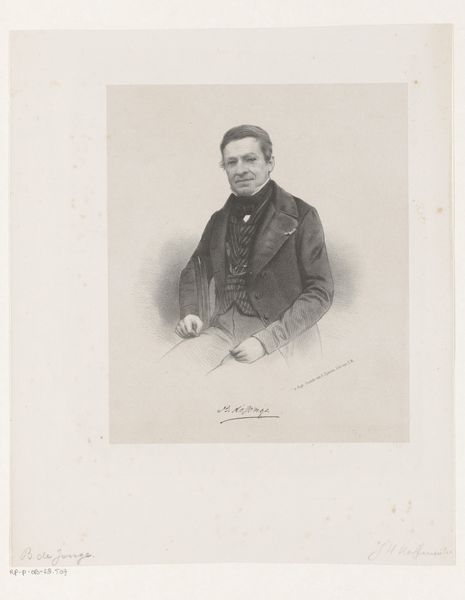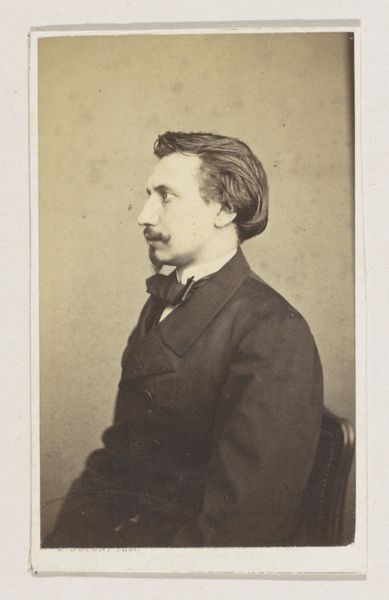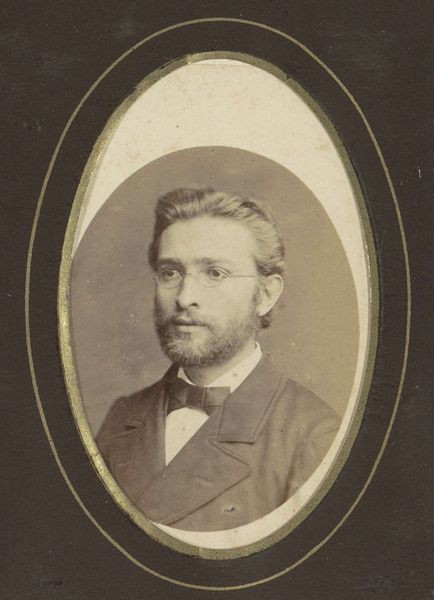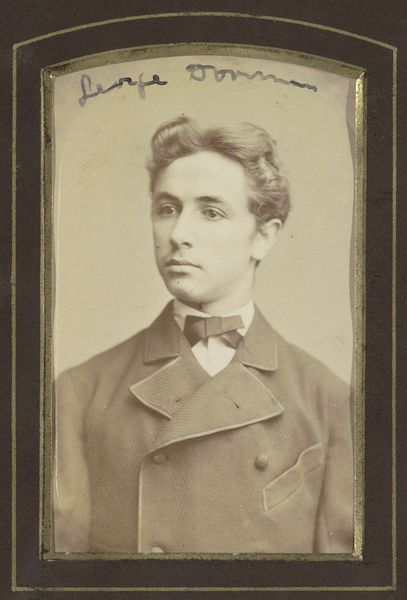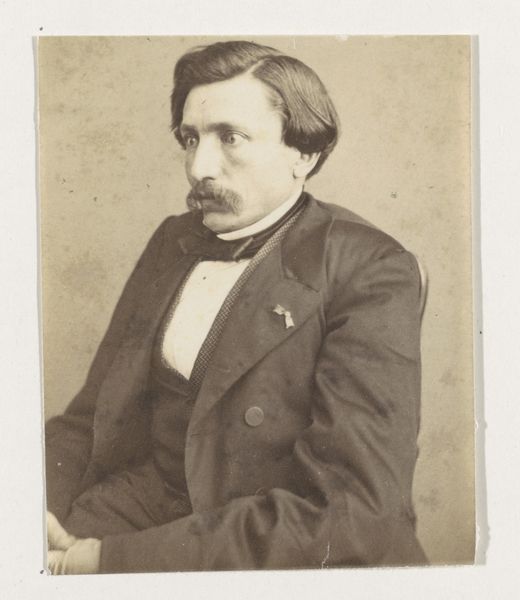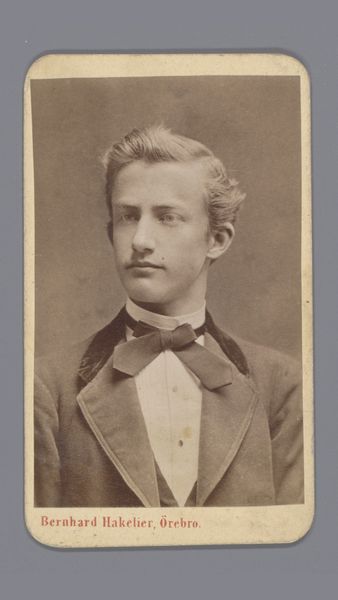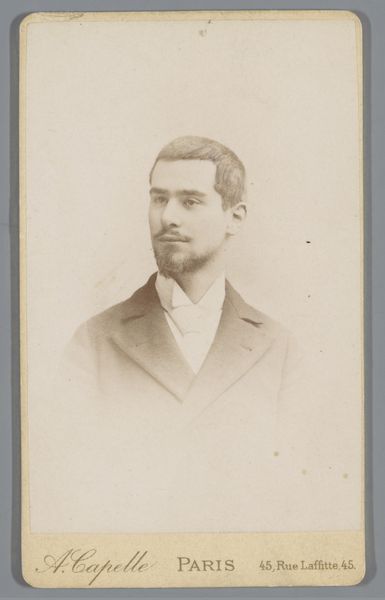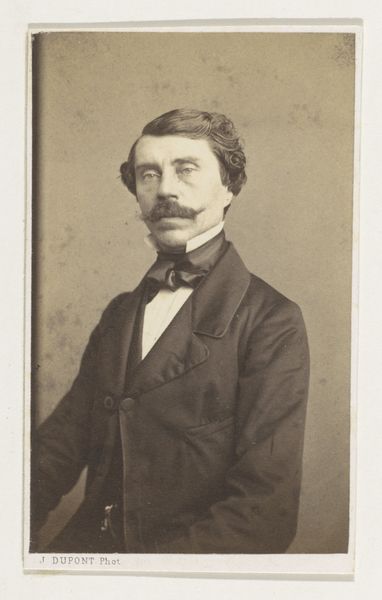
#
character portrait
#
photo restoration
#
low key portrait
#
portrait image
#
historical photography
#
portrait reference
#
portrait drawing
#
portrait art
#
fine art portrait
#
celebrity portrait
Dimensions: height 163 mm, width 121 mm
Copyright: Rijks Museum: Open Domain
Editor: This is a photograph by Nadar, taken around 1890-1900, titled "Portrait of François Coppée, Writer and Poet." It has a certain somber formality to it. The light is muted and controlled. I’m curious, what stands out to you about it? Curator: Considering the materials of photographic production at the time, we can examine Nadar’s technical choices as decisions of artistic labor. This subdued tone isn’t accidental. Think of the collodion process, the glass plates, the darkroom practices required. The deliberate manipulation of light wasn’t just aesthetic, it was integral to the very making of the image, an active molding of reality. Editor: So you’re saying the artistic intent is tied to the photographic process itself? Curator: Precisely. Furthermore, portraits like these had a specific social function within a developing commercial photographic market. Coppée, as a writer, becomes a product partly defined by this visual representation. Consider the economics of portraiture – who could afford these photographs? It reflects a certain class and their consumption habits. The portrait became a tool for branding and circulation in 19th-century society, impacting public image and fame. Editor: That's fascinating. So it's not just about capturing a likeness, but also about participation in a commercial and social ecosystem. Did this influence his poetry? Curator: A compelling question. While a direct causal relationship is difficult to ascertain, one can examine parallels between the constructed, performative nature of public persona, both in poetic work and visual representation. We see this throughout Nadar's subjects; did the demands of commercial presentation mold the art in other forms? Editor: This reframes the photograph. I was focused on the individual, but I now see how the materials and marketplace contributed to its meaning and intent. Curator: Indeed. Analyzing art through its materiality brings the processes and socio-economic relations that shaped its existence to light. The tools are not neutral; they bear a story, and that informs the portrait itself.
Comments
No comments
Be the first to comment and join the conversation on the ultimate creative platform.
